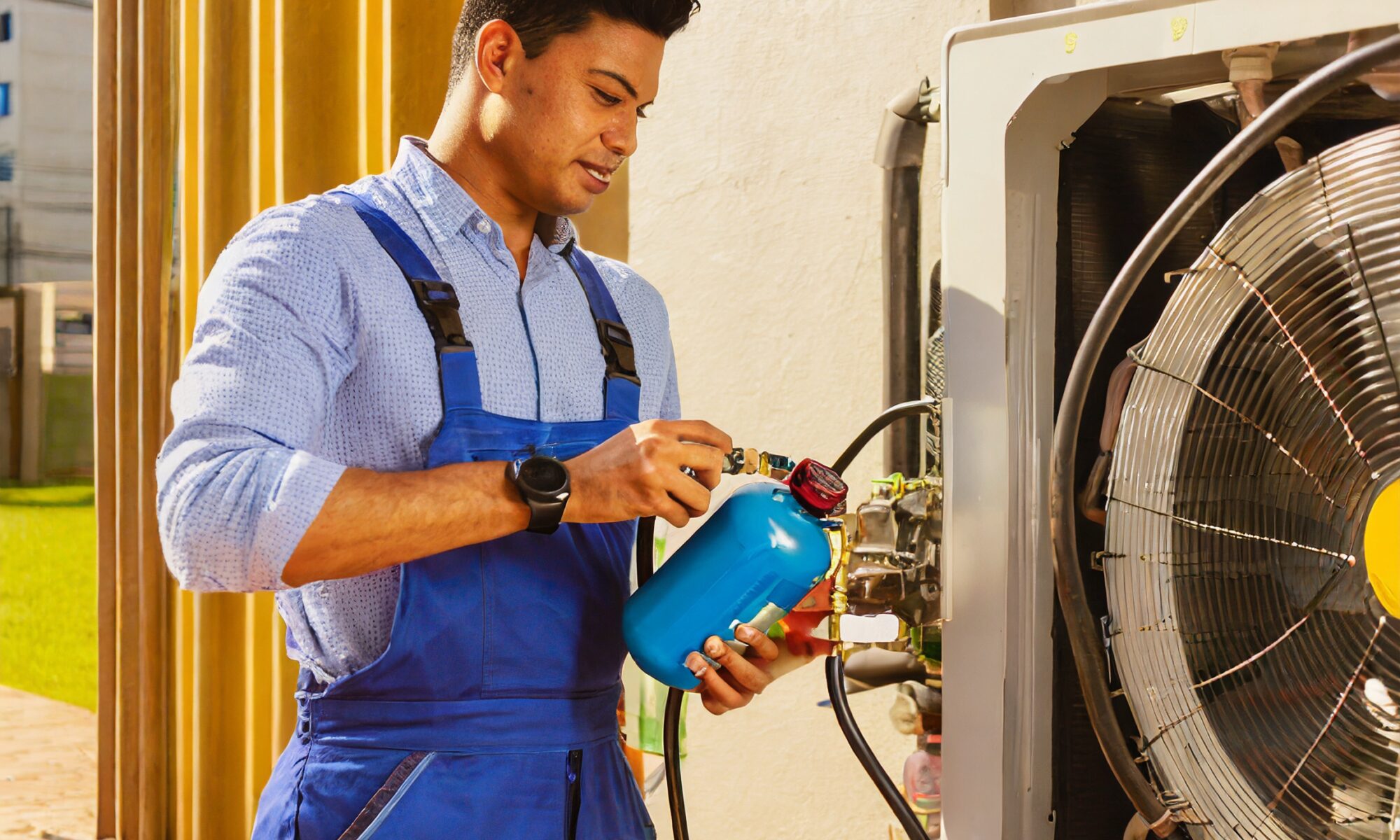Is your aircon running out of refrigerant gas too soon? If so, there is a high possibility of gas leakage from the air conditioning system.
A well functioning AC is highly essential in Singapore’s hot and humid climate as it provides a comfortable living for people. Gas leakage from your aircon system is the most dreaded problem that you may encounter, which is quite expensive to deal with. Usually there are 2 routes that you can take when dealing with aircon gas leak:
- Pressure test to identify the leakage sites.
- Replace the air conditioning system with a completely new system.
Pressure test is advised if the air conditioning system is less than 5 years old, as most parts of the aircon might still be in good functioning state. If the system is older, you may consider a full replacement. In this article we will deep dive into the details of Pressure Test.
Aircon Pressure Test Prices in Singapore
The cost of pressure tests for air conditioning systems can vary due to a range of factors that are as diverse as the systems themselves. The size and type of your air conditioner play a significant role larger or more specialized units often require more extensive testing procedures. Additionally, the complexity of your air conditioning setup is a factor because intricate systems may necessitate more time and expertise for evaluation. The frequency of servicing also influences costs as regularly maintained equipment tends to be in better condition. Moreover, the overall cost of a package can fluctuate if it includes extra services such as thorough inspections or replacement of components.
For easy comprehension, here’s a simplified version of the price chart:
Pressure Test Price
| Number of Unit | Price |
| 1 | S$250 |
| 2 | S$350 |
| 3 | S$450 |
| 4 | S$550 |
Gas Leakage Repair
| Number of Unit | Price |
| 1 | S$400 |
| 2 | S$550 |
| 3 | S$650 |
| 4 | S$750 |
How To Perform Aircon Pressure Test For Gas Leakage
1. Assemble The Required Tools
Gather the tools like refrigerant, pressure gauge and safety gear such as gloves and goggles, to get ready.
2. Shut off The Cooling System
To reduce accidents, always begin by shutting off the air conditioning system, as they create a super safe environment for well-being.
3. Locate Service Ports
Find the low-pressure and high-pressure service ports on the AC system.
4. Connect Gauge
Attach the pressure gauge to the low-pressure service port. Make sure it’s securely connected.
5. Check Pressure
Turn on the AC and observe the pressure reading on the gauge. It should fall within the manufacturer’s recommended range.
6. Watch Out for Leaks
Any abrupt reductions in the pressure gauge should be taken note of, as they may point to a leak in the system.
7. Add Freon As Needed
In case of low pressure, add refrigerant according to the manufacturer’s instructions.
8. Record Results
Note down the pressure readings and any actions taken during the test for future reference.
8. Final Checks
Once the test is complete, double-check all connections and ensure everything is back in place.
10. Turn on AC
Turn the Aircon back on and verify that it’s working correctly after the pressure test.

Benefits of Aircon Pressure Tests
1. Identify Leakage Sites
It helps to identify multiple leakages site on the aircon system which may be causing the gas leakage.
2. Extended Life of Air Conditioning Units
Your cooling system will last longer if possible problems are found and fixed early on. This will also stop needless wear and strain.
3. Improved Indoor Air Quality
Running your air conditioner at full capacity encourages the flow of clean, filtered air, which is particularly helpful for those with respiratory or allergy issues.
4. Major Failure Avoidance
By spotting little problems before they develop into larger breakdowns, you can prevent expensive repairs and ensure ongoing comfort throughout the hot months.
Tips To Prevent Gas Leakage
- To prevent blockages and pressure on the system, clean or replace the air filters every one to three months.
- Regularly check for refrigerant leaks to preserve energy savings and cooling efficiency.
- For cooling purposes, set your thermostat to 78°F. For energy economy, utilize programmed settings.
- Maintain a clear space surrounding your air conditioner, and prune any trees or other obstructions to improve ventilation.
- Plan yearly maintenance with HVAC experts to extend the life of your air conditioner and identify issues early.
- Reduce the possibility of water damage and system faults by maintaining debris- and blockage-free condensate lines. This will ensure efficient drainage.
| It is imperative to reevaluate the requirement for an air conditioning pressure test. Although it could appear like a standard process, in practice, it frequently doesn’t offer any meaningful insights into how the system works. Rather than requiring the additional expense and complexity of a pressure test, routine maintenance and visual inspections may usually resolve the majority of air conditioning problems. Your air conditioner will operate more efficiently and last longer if you priorities preventive maintenance and take quick action to fix visible problems. |



You must be logged in to post a comment.